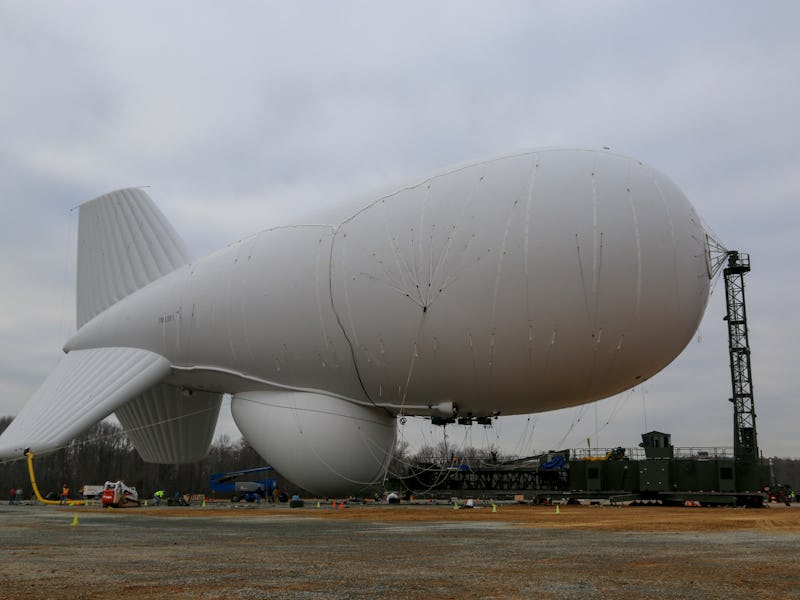The Pentagon Wants to Repair its Runaway Missile Defense Blimp
But Congress isn't stoked on inflating the program's budget.

According to the military, one of our nation’s most important missile-defense assets is a gigantic white blimp that resembles an overinflated pool floatie.
In October, the U.S. Army’s JLENS blimp, a $235 million, highly-sophisticated piece of military hardware, broke free of its moorings in Maryland and drifted slowly, hilariously, and disastrously for 130 miles before fighter jets shot it down, and it got stuck in a bunch of trees in Pennsylvania.
The gigantic, helium-inflated object that looks like a three-finned sperm whale with a weird potbelly dragged 6,700 feet of it’s tether (the thing that was supposed to keep it in Maryland) behind it, terrifying residents of the surrounding areas. And now, top military commanders want to fix it, and get it back in the air.
Admiral William Gortney, commander of U.S. Northern Command, asked Congress if they would please give him $27.2 million to fix his big inflatable airship (which is officially known as the Joint Land Attack Cruise Missile Defense Elevated Netted Sensor System).
“It fills a gap — classified level I can’t say in this forum,” Adm. William Gortney, commander of U.S. Northern Command, said to the Senate Armed Services Committee on Thursday. “It fills a gap, a capability gap that I do not have today, and so we look forward to restarting the JLENS programs after the very unfortunate mishap that we had.”
The JLENS program has a combined price tag of about $2.8 billion, which lawmakers have been taking a close look at since the Maryland blimp’s embarrassing autonomous joyride. It’s intended purpose is as an early-warning system for cruise missile attacks, floating at 10,000 feet in the air and operating in pairs to scan for and report on any missile launches in their area of operation. Blimp-teams have been used effectively in Iraq and Afghanistan, and military officials now say they could be invaluable in monitoring the ongoing conflict in Syria, where Russia is frequently using cruise missiles.
“The Russians are employing these cruise missiles in Syria today, both from bombers, ships and submarines,” Gortney said. “There’s no operational or tactical requirement to do it. They’re messaging us that they have this capability and those missiles can have a nuclear-tipped or conventional warhead.”
Without the blimps, Gortney says the military’s missile defense system (the nature of which is classified) would be incomplete, and vulnerable. He also assured Congress that the circumstances leading up to last October’s mistake will not be repeated.
“We understand what happened,” he said. “We put in place the mitigation efforts, and we look forward to completing it. Should it bear out, it fills a gap that I do not have today against this particular threat.”